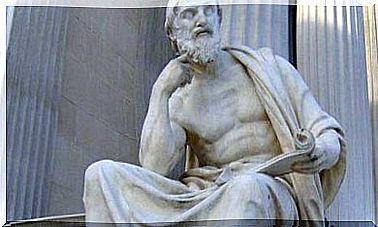Extended Mind: Beyond The Confines Of The Brain

The concept of extended mind comes from a significant and interesting philosophical theory. According to this principle, our mind does not dwell only in the neural universe contained and delimited by the brain. The essence of thoughts, creativity, emotions and desires expands to other people, shaping social relationships, culture, language, technology.
The extended mind hypothesis, as can be guessed from this premise, may seem extreme and hard to believe. For most psychologists, in fact, the cognitive process is mainly the result of a biochemical process. We receive a stimulus, we process it with that wonderful organ that is the brain and finally we emit a response (behavior).
This rather materialistic or monistic approach does not accept the idea that the mind goes beyond the confines of the skull. Descartes had already advanced a hypothesis. According to the famous French philosopher, mathematician and physicist, mind and body are two completely separate dimensions.
This premise has opened the way for new interesting reflections. Both philosophy and a discipline as important as social psychology admit that the mind does not live only in the territory delimited by an organism and a neural network.
The mind expands, advances and connects; and with it also the cognitive systems, with a very specific purpose: to give shape to our social world, to interactions and creative acts.

The extended mind: when thoughts go beyond the skin
The most classical psychological science understands the entire cognitive process as intracranial. In other words, our mind resides in this inner cubicle, while society and the world are in another scenario. Extended mind theory does not see it that way.
Accept, despite everything, that thoughts, reflections, desires, creative acts and motivation come from the human brain, but they do not stop there. The function of the mind is to emerge and interact with the environment to give it shape and meaning.
Breaking down the limits of the mind
The extended mind theory was first proposed in the late 1990s by the philosopher Susan Hurley. Lecturer at the University of Bristol, Hurley revolutionized the academic world with her essay Consciousness in action .
In it the philosopher criticized the classic scheme of cognitive psychology that sees the mind as an entity that limits itself to processing stimuli (input) and providing answers (output).
The researches of the Oxford philosophers Andy Clark and David Chalmers were later published. Clark’s book Supersizing the mind gave the definitive framework to the theory of the extended mind in 2008.
The main premise, already established in the 1990s, is that we must abandon the traditional idea that the human mind resides only in the skull. We must go beyond this limit, have the courage to overcome it, broaden the horizon and understand how the world and society are really made.

Mindware, the mental mechanism that goes beyond the brain
Mindware is a new concept in the social sciences. The term includes the set of resources that make up the human mind. It contains neurological, bodily, biochemical and even extracorporeal processes. What is meant by extracorporeal?
The extended mind theory reminds us that the mind can rely on “external software” to be able to act outside our body.
We can, for example, make use of books or technology, connect to other people and learn… All these processes, in fact, are manifestations of mental processes, the same ones that allow us to grow, learn and evolve as a social group.
According to this theory, our organism is continuously connected to these external entities, in a two-way interaction. It is therefore a couple system in which we start from internal cognitive processes to reach the surrounding environment and obtain something: learning, relationships, experience …
It is an essential principle in childhood development. The child expands his mind to connect with his environment, with those who inhabit it and with any phenomena that occur around him.

The extended mind and artificial intelligence
Part of the scientific community does not accept or approve of the extended mind theory. This cognitive externalism is uncomfortable because it situates the universe of consciousness outside our body, beyond those limits that we believe we can control.
Some philosophical and neuroscientific currents have advanced the hypothesis that soon we will be able to have portable cognitive units.
Neural implants able to provide us with specific skills for which no experience or learning would be necessary. These would be external “mental units” to be installed in the mind as part of a software that allows us to be more efficient.

All this brings us back to what Donna Haraway, a Californian philosopher, anticipated in 1983 in her Cyborg Manifesto : a future of hybrid organisms in which the biological and technological elements give life to more advanced human beings.
Today the big hi-tech companies have already laid the foundations of artificial intelligence. The extended and “portable” mind is an essential resource that provides robots with the cognitive capacity necessary to move in specific scenarios.
However, as neurologist Antonio Damasio points out, artificial intelligence can never resemble human intelligence because it lacks an essential and decisive element: emotions.









